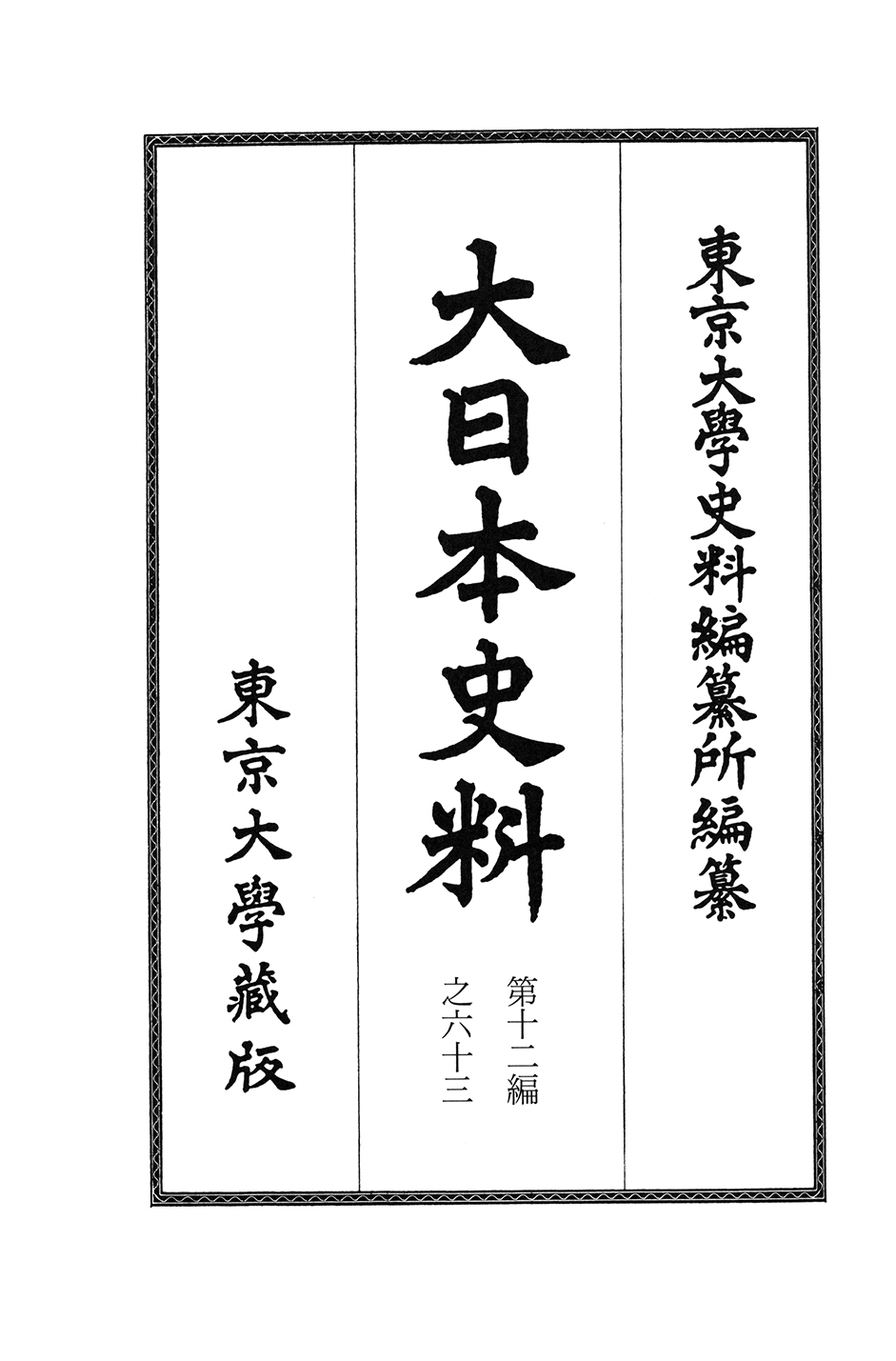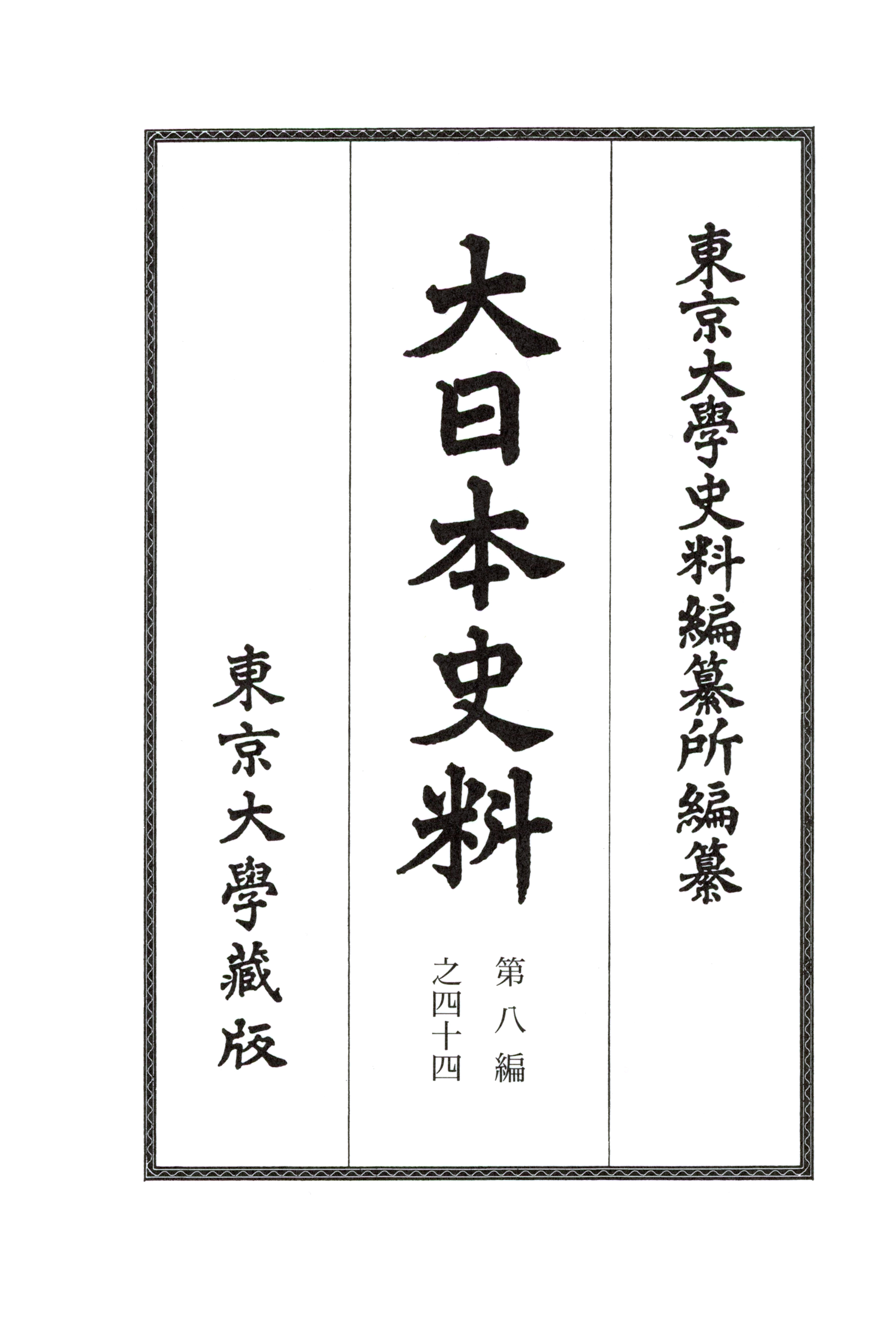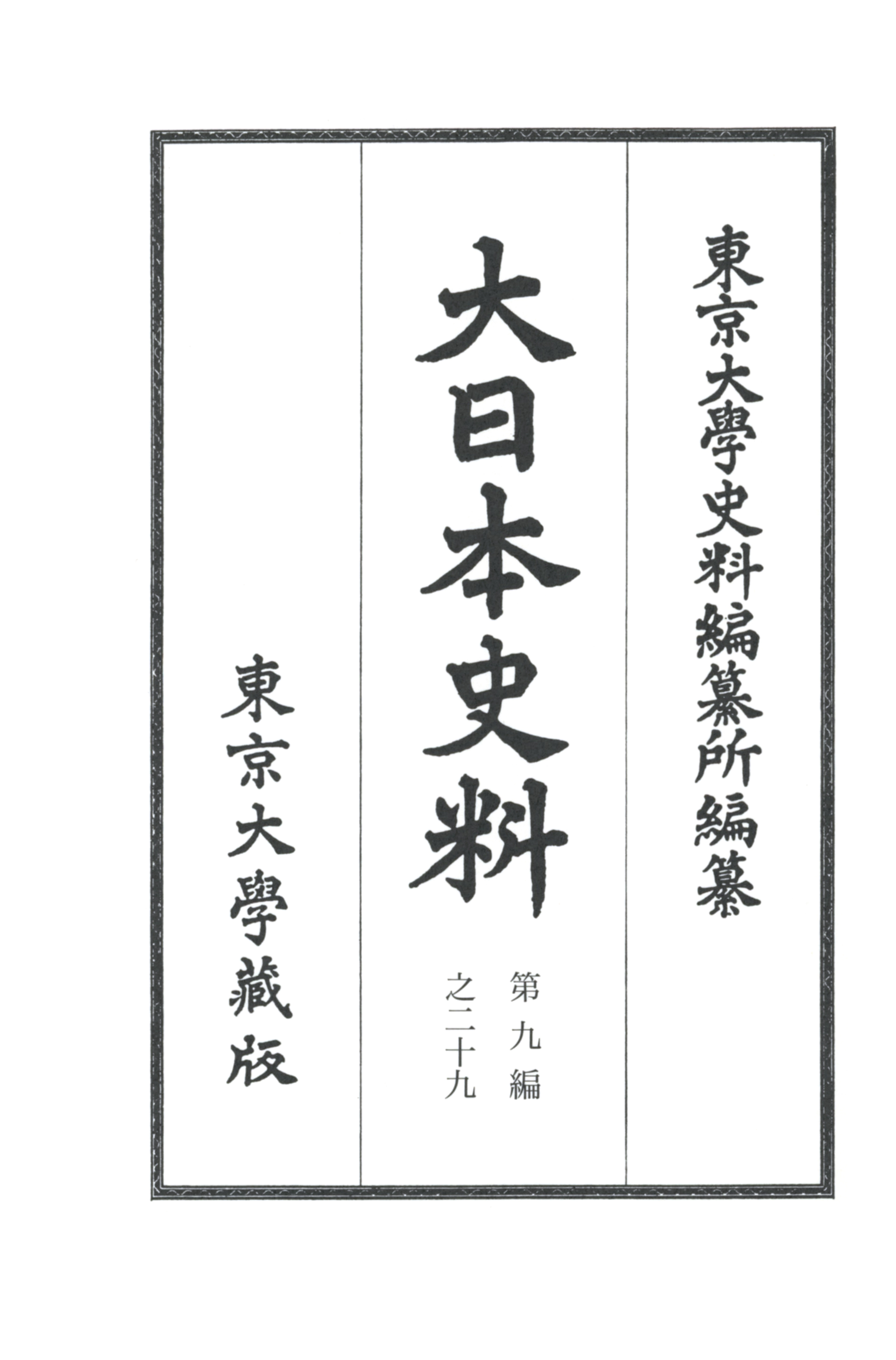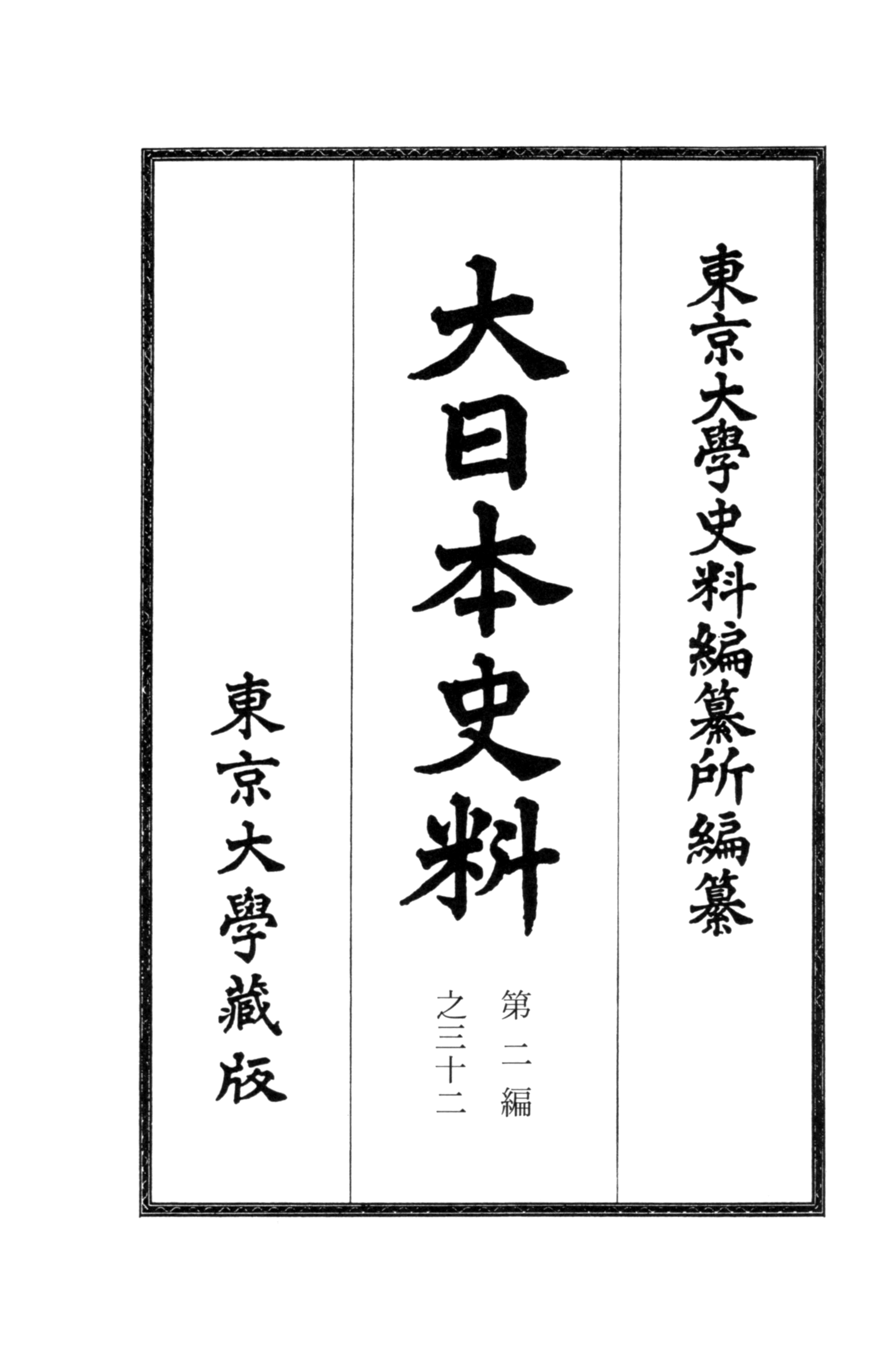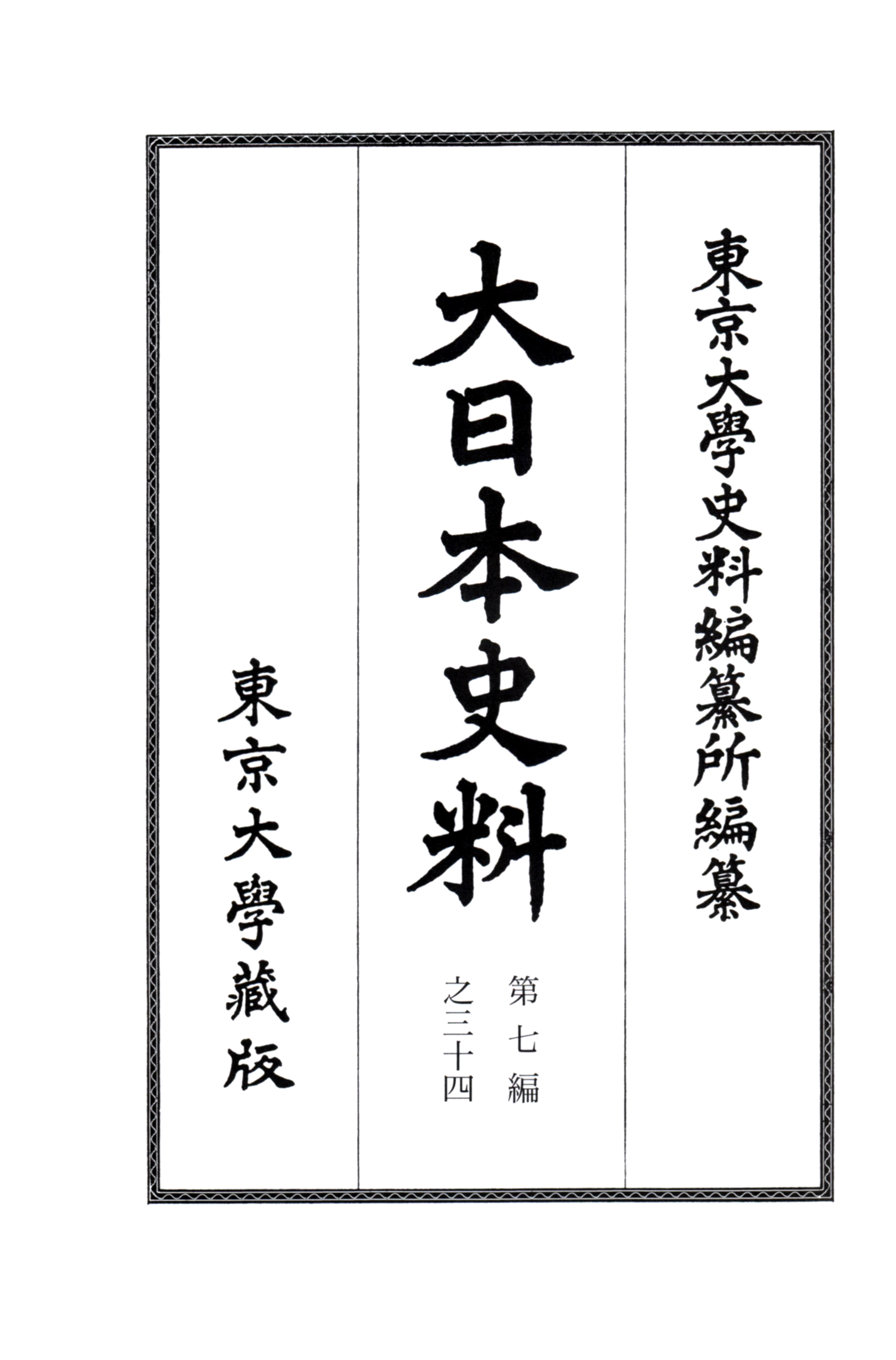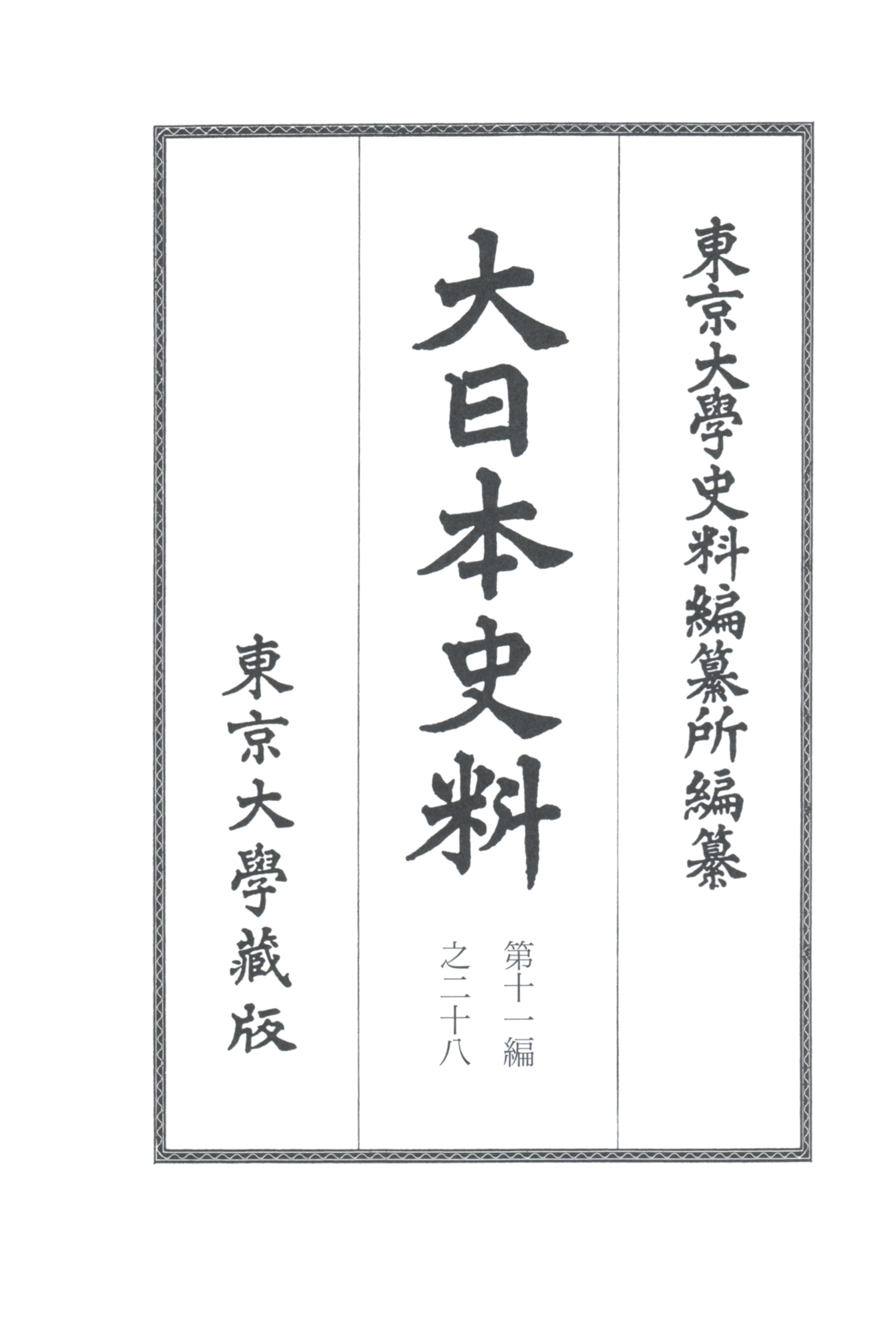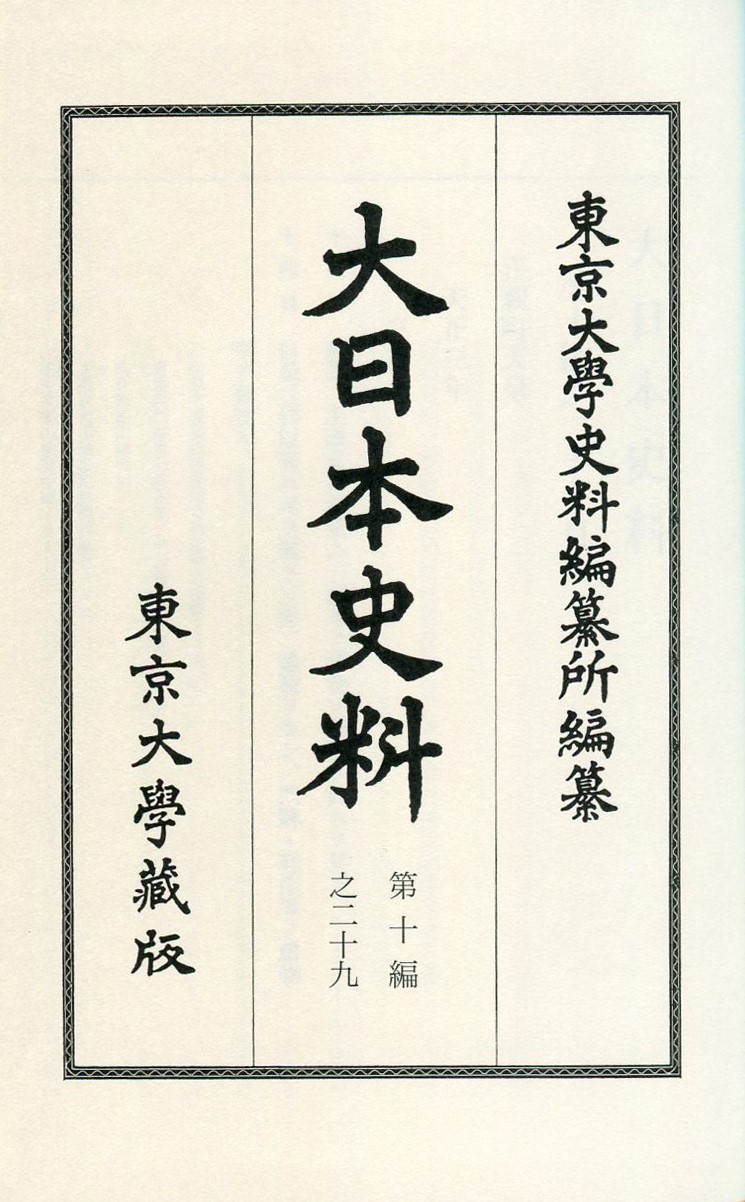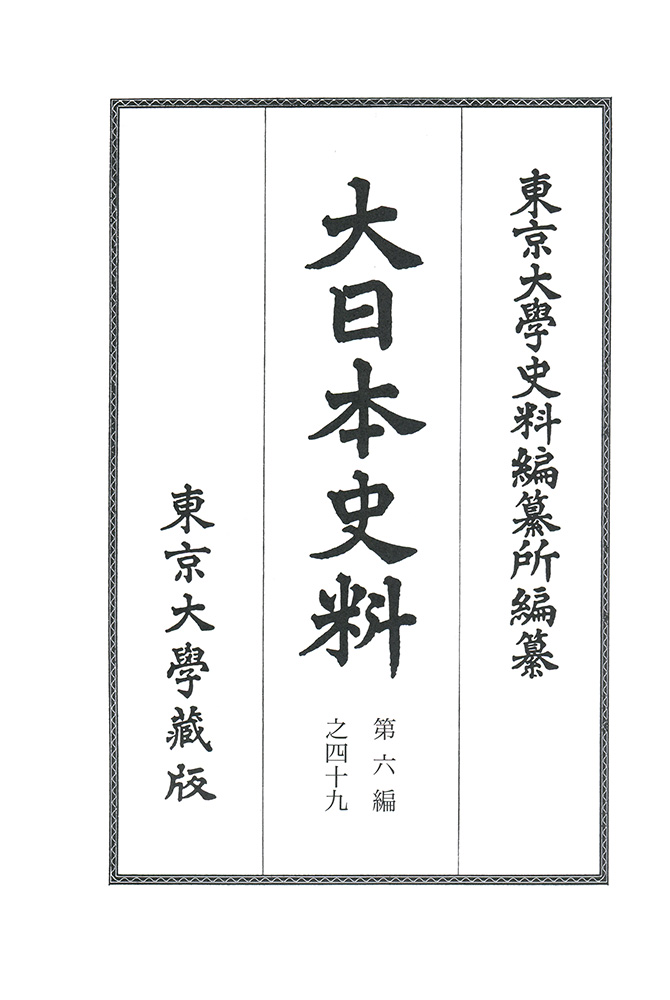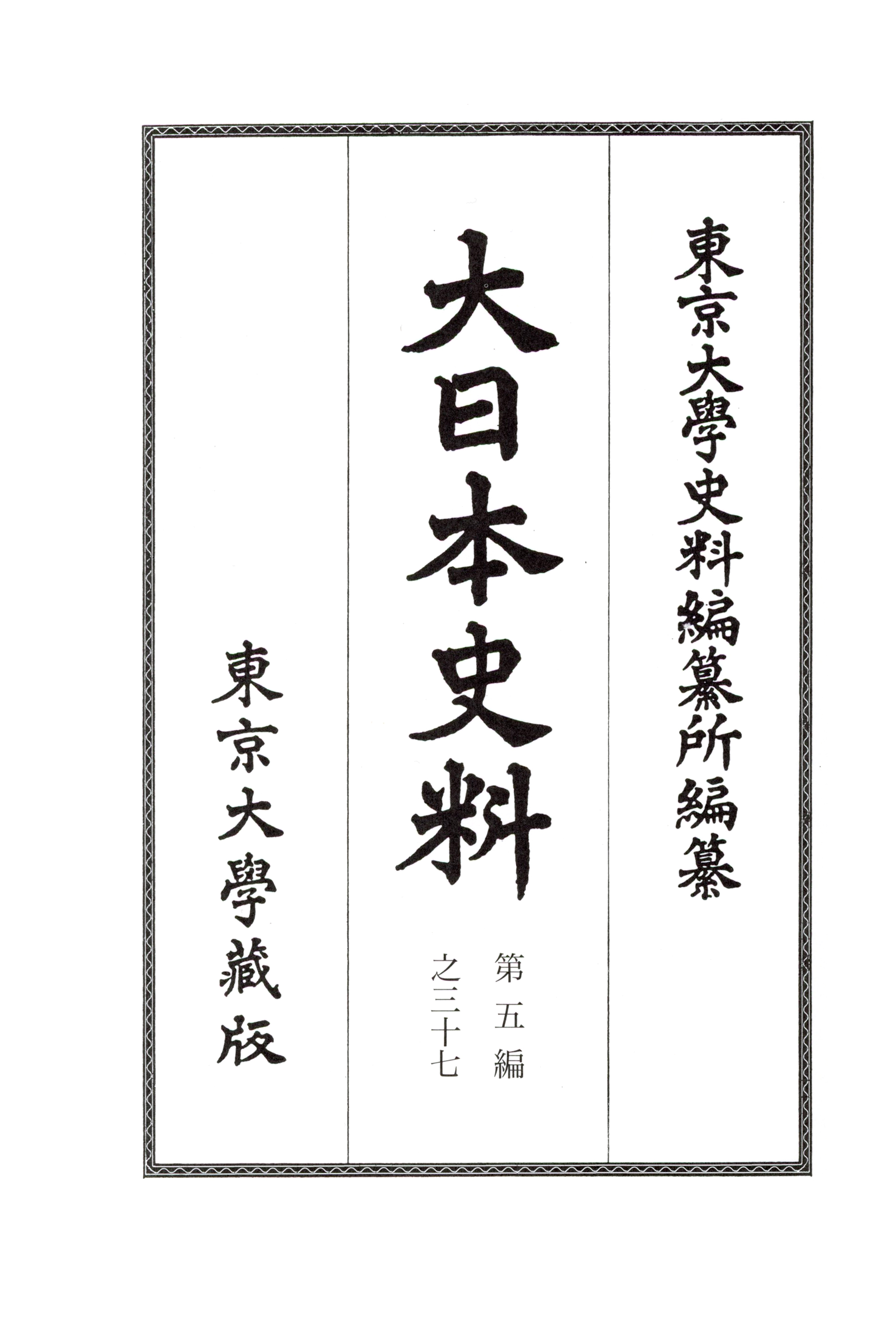
Title
Dai-Nihon Shiryo: Dai 5 no 37 (Chronological Source Books of Japanese History: Part 5, Volume 37)
Size
424 pages, A5 format
Language
Japanese
Released
March 31, 2022
ISBN
978-4-13-090237-3
Published by
University of Tokyo Press
Book Info
See Book Availability at Library
Japanese Page
Chronological Source Books of Japanese History is one of the collections of historical sources related to Japanese history that are being compiled and published by the Historiographical Institute at the University of Tokyo. Following on from the six national histories, starting with the Nihon shoki, this series covers the 980 years from 887 to 1867 in sixteen parts, and currently work is on-going on those parts up to part 12 (dealing with the early Edo period). Part 5 deals with approximately 110 years, from Emperor Go-Horikawa’s accession to the throne (7th month of Jōkyū 3 [1221]) after the Jōkyū Disturbance to the fall of the Kamakura shogunate in the fifth month of Genkō 3 (1333), and volume 37, introduced here, deals with the year Kenchō 3 (1251). Volume 1 of part 5 (7th month of Jōkyū 3 to 5th month of Jōō 2 [1223]) was published in 1921, which means that it has taken about one hundred years to compile thirty years’ worth of historical sources.
In Chronological Source Books of Japanese History, various incidents and events are summarized in succinct outlines and arranged in chronological order, and for each outline there are listed the historical sources providing the basis for the outline. However, outlines are not given for every incident and event recorded in historical sources. The criteria for whether or not to include an outline vary for each part. In the case of part 5, outlines are provided chiefly for events relating to the imperial court (retired and reigning emperors) and the shogunate (shoguns and regents), and sources recording events unsuited to summarizing in outlines are placed at the end of each year as “Year-end Miscellaneous Events” and are classified into categories such as “Natural Disasters,” “Shrines,” “Temples,” and “Scholarship and Arts.”
Volume 37 of part 5 (published in 2022) deals with the year Kenchō 3 (1251) and follows on from volume 35 (1st to 7th months of Kenchō 3) published in 2014 and volume 36 (8th to 12th months) published in 2018, and it contains “Year-end Miscellaneous Events” (and also an “Addendum” containing sources that were omitted in previously published volumes). The sources have been classified into fourteen categories: “Natural Disasters,” “Shrines,” “Temples,” “Aristocratic Families,” “Non-Aristocratic Families,” “Illness and Death,” “Scholarship and Arts,” “Estates and Landholdings,” “Land Surveys,” “Land Taxes and Miscellaneous Dues,” “Lawsuits,” “Donations,” “Property Transfer and Disposal,” and “Buying, Selling, and Pawning.” The sources included in “Year-end Miscellaneous Events” are many and varied, and it could be said that a characteristic of these sources is that, when compared with sources accompanied by outlines, they include comparatively many that are difficult to come to the notice of researchers. When compiling this volume, we endeavoured to include as many sources as possible by searching through the copies of sources and catalogues that the Historiographical Institute has been steadily investigating and accumulating for more than 150 years since the Meiji era and also through databases, the development of which has been advancing in recent years.
The designation “Year-end Miscellaneous Events” may give the impression that they deal with events of little historical value or importance, but this is by no means the case. It is true that the individual events may not make it into history books by themselves. But the subject matter of historical research is by no means restricted to the state and politics. If you peruse the “Year-end Miscellaneous Events,” your attention will be drawn to the daily lives of people in the Kamakura period, their beliefs, and various events, both major and minor, that occurred in their communities. This is why we sometimes hear people say that the “Year-end Miscellaneous Events” are more interesting than other sources. We would encourage readers to take this book in their own hands and so come into contact with the richly varied world preserved in these historical sources.
(Written by HORIKAWA Yasufumi, Associate Professor, Historiographical Institute / 2023)



 Find a book
Find a book



